Dance, a quintessential element of human expression, transcends boundaries and speaks to the soul. Dance forms of India reveal the rich and vibrant tapestry of India’s diverse cultural heritage. Dance forms of India hold an irreplaceable position, reflecting the nation’s rich history, traditions, and social ethos. India, with its kaleidoscopic range of cultures and regions, boasts a captivating array of dance forms that are as enchanting as they are meaningful. Here is the list of top dance forms of India along with some interesting information on them.
Bharatanatyam: A Dance of Elegance and Devotion
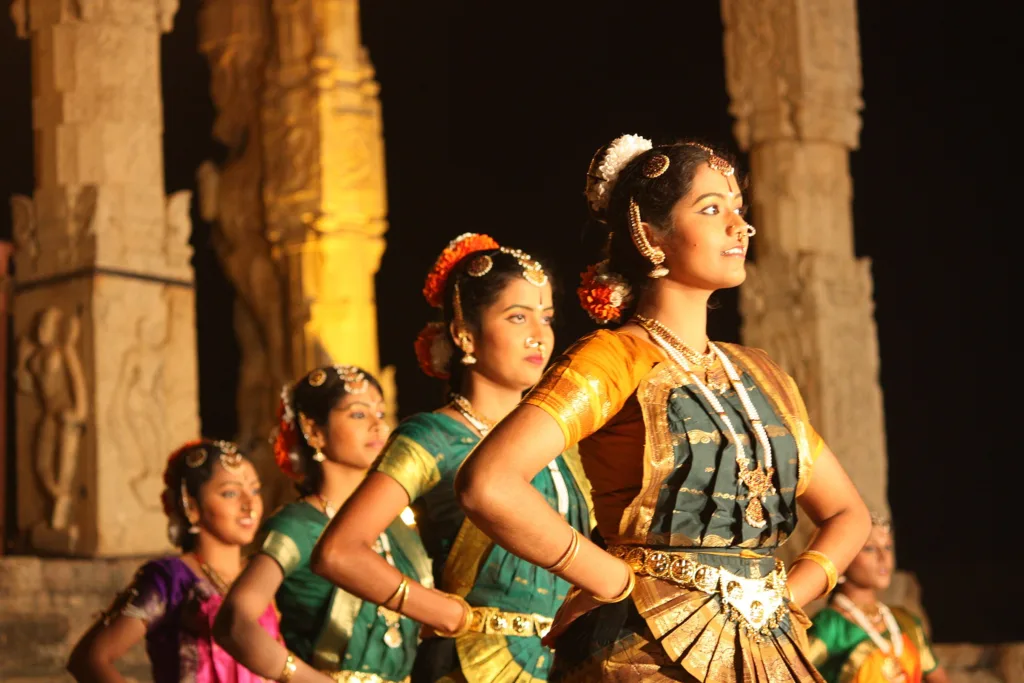
History and Region: Originating in the temples of Tamil Nadu, Bharatanatyam is an ancient classical dance form that weaves spirituality, rhythm, and grace into a mesmerizing performance. With roots tracing back to the Natya Shastra, an ancient Indian treatise on the performing arts, Bharatanatyam emerged as a temple ritual before evolving into a revered classical art form.
Cultural Importance: Bharatanatyam is a means of transcending the mundane and connecting with the divine. It is a medium through which stories of gods, goddesses, and mythological tales are brought to life, conveying intricate emotions and philosophies. The dance form exemplifies the embodiment of beauty and spirituality.
Characteristics: Characterized by intricate footwork, expressive gestures, and elaborate costumes, Bharatanatyam is a harmonious blend of Nritta (pure dance), Nritya (expressive dance), and Natya (dramatic storytelling). The dancer’s adept movements, from mudras (hand gestures) to adavus (steps), create a visual symphony that resonates with the audience.
Performance and Impact: Bharatanatyam finds its stage not only in temple courtyards but also in modern auditoriums worldwide. The dancer’s expressions, whether depicting tales of love, devotion, or valor, draw the audience into a trance-like state. Festivals, weddings, and cultural events serve as platforms for this captivating dance, leaving an indelible mark on those fortunate enough to witness it.
Interesting Tidbit: Did you know that Bharatanatyam was once frowned upon due to misconceptions about its association with temple rituals? In the early 20th century, stalwarts like Rukmini Devi Arundale played a pivotal role in reviving and re-establishing its position as a respected classical dance form.
Kathak: Weaving Stories through Graceful Movements

History and Region: Evolving in the courts of North India, Kathak is a mesmerizing classical dance form that narrates stories through delicate footwork, intricate spins, and expressive hand gestures. Its origins can be traced back to the bards and storytellers of ancient India.
Cultural Importance: Kathak embodies the fusion of Persian and Indian cultures, a testament to the country’s historical interactions. The dance form elegantly captures the essence of love, devotion, and spirituality while showcasing the interplay of rhythm and melody.
Characteristics: The hallmark of Kathak lies in its ‘tatkar’ or footwork, which is both rhythmic and precise. Dancers adorn themselves with ornate costumes, ankle bells (ghungroos), and often, a veil. The chakkar spins, intricate foot patterns, and emotive abhinaya (expressions) create a kaleidoscope of emotions on stage.
Performance and Impact: Kathak performances have graced both royal courts and modern stages, bewitching audiences with their intricate movements. The synergy between the dancer and percussionist, with the tabla serving as the heart of the composition, adds a dynamic element to the narrative.
Interesting Tidbit: Did you know that Kathak’s connection to storytelling is so potent that it even found its way into the Mughal courts? Legendary Kathak artist Birju Maharaj, a custodian of this art, has brought Kathak to global audiences, cementing its timeless appeal.
Odissi: The Enchanting Poetry of Sculpturesque Dance
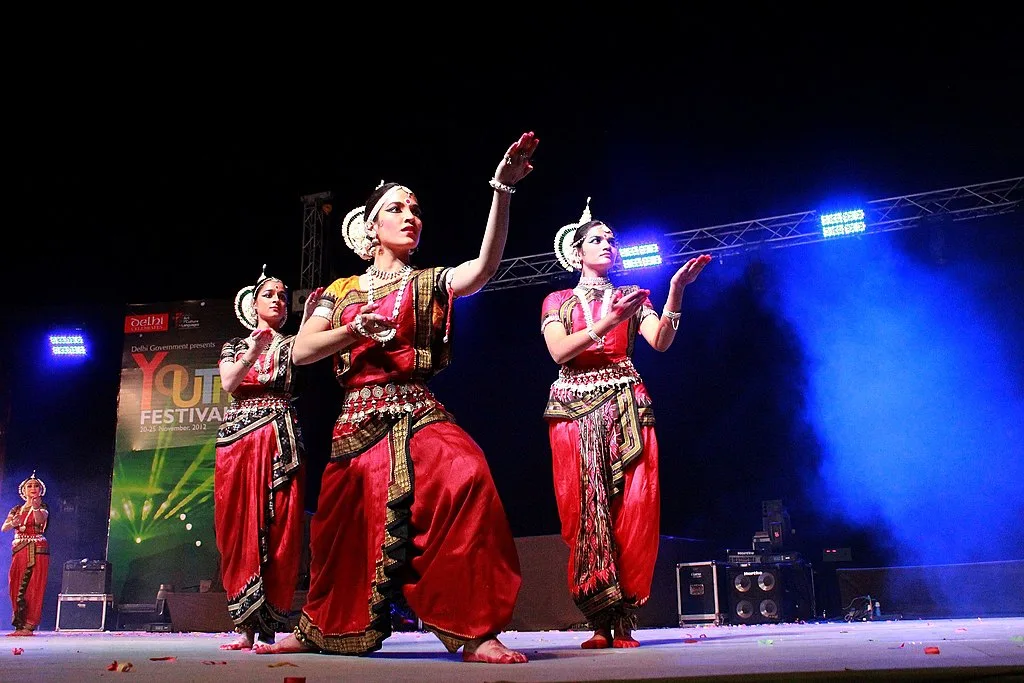
History and Region: Originating in the temples of Odisha, Odissi is a classical dance form that embodies the grace and poetry of ancient sculptures. It was nurtured as a devotional expression and later evolved into a revered art form.
Cultural Importance: Odissi celebrates the tales of Lord Krishna and the verses of the Geeta Govinda, bringing to life the devotion and romanticism inherent in Indian spirituality. It’s a dance that mirrors the exquisite sensibilities of the temple art.
Characteristics: Fluidity and sculpturesque poses are the hallmarks of Odissi. The ‘tribhangi’ posture, where the body forms three graceful bends, captures the essence of the dance. Intricate hand gestures and eye movements create a language that speaks beyond words.
Performance and Impact: Odissi’s revival in the mid-20th century brought it back to the forefront of cultural expression. Its lyrical movements and emotive storytelling have found their way onto both traditional and contemporary stages, captivating audiences with their evocative charm.
Interesting Tidbit: Did you know that the sculptures adorning the temples of Odisha served as inspiration for Odissi’s postures and movements? This unique connection between dance and sculpture enriches Odissi’s artistic tapestry.
Kathakali: The Majestic Dance-Drama of Kerala
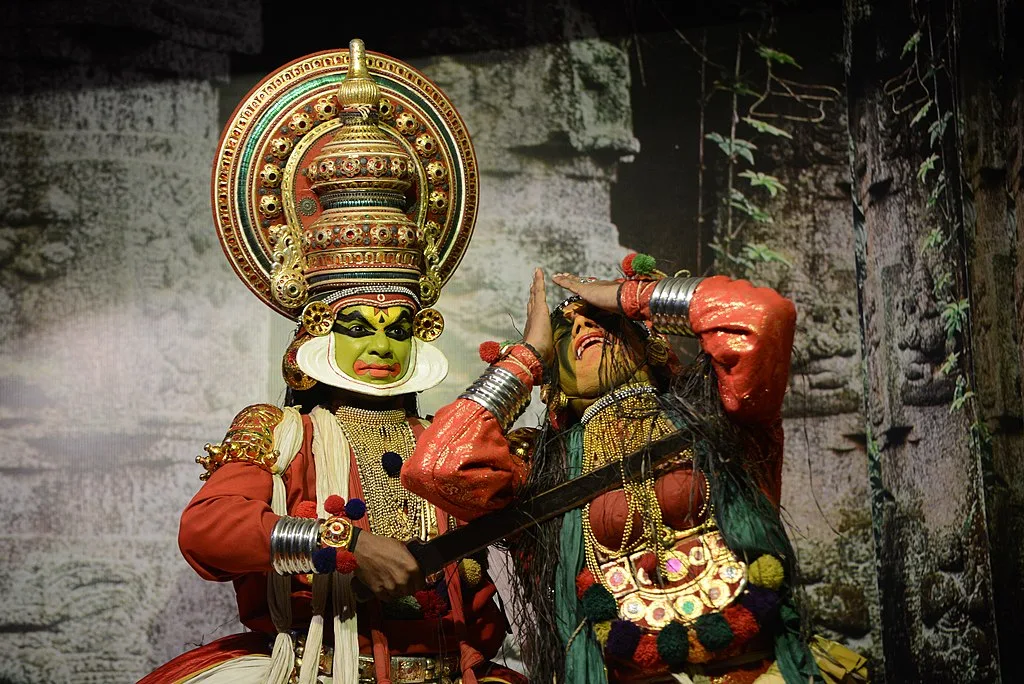
History and Region: Kathakali, a mesmerizing dance-drama form, has its roots in the lush landscapes of Kerala. With a history spanning over four centuries, this art form evolved from the ancient dance dramas of the region.
Cultural Importance: Kathakali serves as a window into the mythologies, epics, and legends of Kerala. It is a powerful blend of dance, music, elaborate costumes, and makeup, creating a visual extravaganza that narrates stories of valor and virtue.
Characteristics: The elaborate makeup, ornate costumes, and dramatic facial expressions characterize Kathakali. The performers bring mythological characters to life with vibrant colors, intricate headgear, and exaggerated facial features.
Performance and Impact: The performances of Kathakali are nothing short of an immersive experience, transporting the audience to a world of vibrant emotions and larger-than-life characters. The intense training, dedication, and intricate hand gestures (mudras) transform the stage into a canvas of art.
Interesting Tidbit: Did you know that Kathakali artists spend hours preparing for a performance, applying the intricate makeup and costumes themselves? The preparation becomes a meditative ritual, infusing their characters with authenticity and depth.
Manipuri: An Ode to Grace and Devotion

History and Region: Emerging from the northeastern state of Manipur, Manipuri dance is a blend of rhythmic movements and spiritual devotion. Rooted in the rituals of the region, it is a celebration of nature, love, and the divine.
Cultural Importance: Manipuri dance embodies the spiritual connection between humans and nature. The delicate and graceful movements, accompanied by lilting music and poetic verses, create an ethereal ambiance that resonates with the audience.
Characteristics: The unique feature of Manipuri dance lies in its circular movements and fluidity. Dancers often adorn traditional attire, with intricate designs and vibrant colors, creating a visual feast that complements the dance’s elegance.
Performance and Impact: Manipuri dance’s serene beauty and emotive storytelling have found admirers worldwide. Whether performed in traditional settings or contemporary stages, the dance form’s essence remains intact, evoking a sense of wonder and introspection.
Interesting Tidbit: Did you know that Manipuri dance often involves storytelling through intricate hand movements and facial expressions rather than elaborate footwork? This distinctive approach sets it apart from many other Indian dance forms.
Kuchipudi: A Melange of Dance and Drama
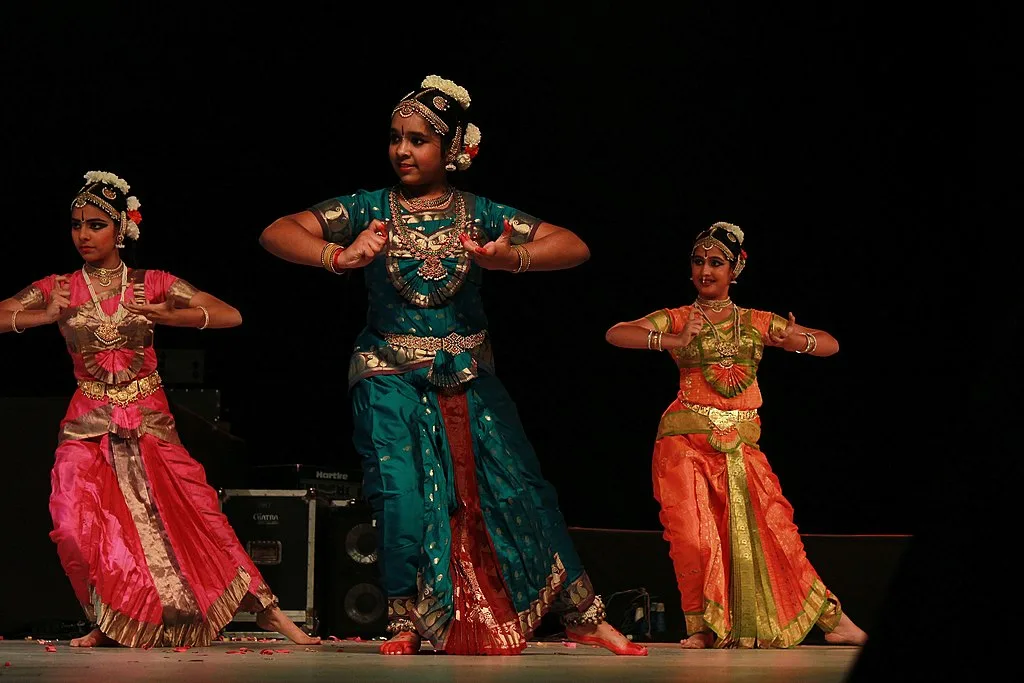
History and Region: Emerging from the southeastern state of Andhra Pradesh, Kuchipudi is a classical dance form that seamlessly weaves dance, music, and drama into a mesmerizing performance. Its roots can be traced back to the village of Kuchipudi, where it originated as a temple art.
Cultural Importance: Kuchipudi’s harmonious blend of storytelling and expressive movements allows it to convey intricate tales from mythology and folklore. It’s a testament to the seamless integration of dance and drama in Indian performing arts.
Characteristics: Kuchipudi is marked by swift footwork, graceful movements, and intricate hand gestures. Performers often dance to classical Carnatic music, bringing to life the characters and emotions of the stories they depict.
Performance and Impact: Kuchipudi, with its vibrant costumes and elaborate makeup, has graced stages both in India and internationally. Its nuanced storytelling, replete with expressions and gestures, captivates audiences, creating an immersive experience.
Interesting Tidbit: Did you know that Kuchipudi was traditionally performed exclusively by men? It wasn’t until the 20th century that women began to actively participate in this dance form, contributing to its evolution and popularity.
Sattriya: A Sacred Dance of Assam

History and Region: Hailing from the northeastern state of Assam, Sattriya is a dance form deeply rooted in the devotional practices of the Vaishnavite monasteries (sattras). It emerged as a medium for conveying spiritual stories and teachings.
Cultural Importance: Sattriya dance serves as a spiritual bridge, connecting the earthly realm with the divine. It brings to life the verses of the Bhagavad Gita and the legends of Lord Krishna, embodying the essence of devotion.
Characteristics: Sattriya is characterized by graceful movements, intricate footwork, and emotive expressions. Dancers don traditional attire, often adorned with masks, and use hand gestures (hastas) to convey emotions and stories.
Performance and Impact: Sattriya’s journey from the monasteries to the stage has brought its ethereal beauty to a wider audience. The dance’s seamless flow and devotion-laden themes resonate with spectators, transporting them to a realm of spiritual transcendence.
Interesting Tidbit: Did you know that Sattriya was almost lost to obscurity until the efforts of cultural pioneers like Sattriya exponent Dr. Bhupen Hazarika revived and popularized the art form?
Bihu: Celebrating Life Through Folk Dance
History and Region: Originating from the northeastern state of Assam, Bihu is a vibrant and exuberant folk dance that celebrates the changing seasons and the cycle of agricultural life. It is an integral part of Assamese culture.
Cultural Importance: Bihu dances are a testament to the deep connection between nature and human life. They embody the joy, celebration, and vitality of rural existence, marked by the sowing and harvesting of crops.
Characteristics: Bihu is marked by brisk and energetic movements, often accompanied by rhythmic clapping and joyful singing. Dancers, adorned in traditional attire, create formations that reflect the rhythms of rural life.
Performance and Impact: Bihu is not confined to stages; it spills into open fields during the Bihu festivals, creating an infectious atmosphere of celebration. The dance brings communities together, forging bonds and keeping traditions alive.
Interesting Tidbit: Did you know that Bihu is celebrated in three different forms throughout the year: Bohag Bihu in spring, Magh Bihu in winter, and Kati Bihu in autumn? Each Bihu marks a distinct phase in the agricultural calendar.
Lavani: The Fiery Folk Dance of Maharashtra
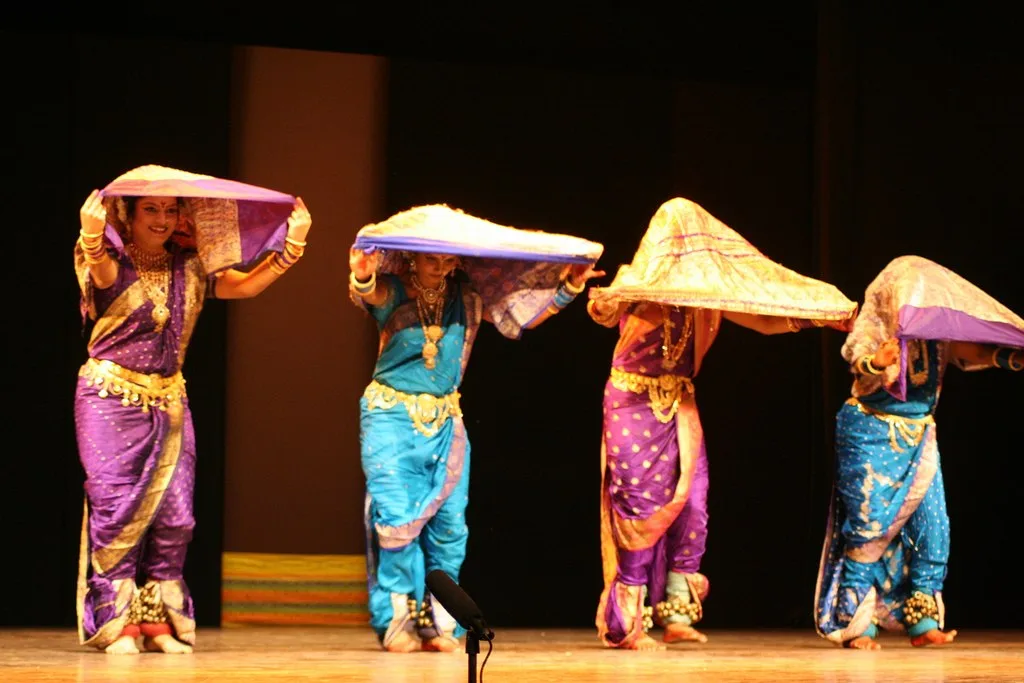
History and Region: Hailing from the state of Maharashtra, Lavani is a spirited folk dance that exudes sensuality, vigor, and vibrancy. It originated as a form of entertainment in the region’s villages and markets.
Cultural Importance: Lavani’s bold and vivacious movements reflect the spirit of Maharashtra’s vibrant folk culture. It’s a celebration of womanhood, life’s vitality, and the unapologetic embrace of one’s identity.
Characteristics: Lavani is marked by swift footwork, graceful hand movements, and expressive storytelling. Dancers often wear vibrant nine-yard sarees, and their performances are accompanied by robust musical instruments and singing.
Performance and Impact: Lavani’s energetic and fearless performances have made it a cherished part of Maharashtra’s cultural landscape. It continues to captivate audiences, while also challenging societal norms and conventions.
Interesting Tidbit: Did you know that Lavani was historically performed in the context of the Tamasha theater, which often touched upon social and political issues through its performances?
Garba: Spinning into the Joy of Festivity

History and Region: Originating from the western state of Gujarat, Garba is a lively folk dance that is an integral part of the state’s Navratri festival celebrations. It is a tribute to Goddess Durga and her victories over evil.
Cultural Importance: Garba is a joyous expression of devotion, community, and celebration. It brings people together in colorful attire, uniting them in dance and creating an atmosphere of merriment.
Characteristics: Garba is marked by its circular patterns and rhythmic clapping. Dancers often move in synchronized steps, creating a harmonious display of movement and energy. The dance radiates happiness and camaraderie.
Performance and Impact: The fervor of Garba reverberates through Gujarat during Navratri, where people of all ages come together to participate. The dance has transcended regional boundaries, becoming a global symbol of festivity.
Interesting Tidbit: Did you know that Garba’s origin can be traced back to ancient rituals celebrating fertility and the goddess Amba? It has evolved over centuries into the spirited dance we know today.
Mohiniyattam: The Dance of Enchanting Beauty

History and Region: Emerging from the southern state of Kerala, Mohiniyattam is a classical dance form that epitomizes grace and femininity. Its origins are rooted in the devotional performances of Kerala’s temples.
Cultural Importance: Mohiniyattam’s gentle and lyrical movements pay homage to the divine feminine, embodying stories of love and devotion. The dance form’s delicate expressions and swaying motions create an ethereal experience.
Characteristics: Mohiniyattam is characterized by flowing movements, intricate hand gestures, and subtle expressions. Performers wear traditional white and gold costumes, and their performances are often accompanied by soulful music.
Performance and Impact: Mohiniyattam’s charm has transcended regional boundaries, captivating audiences across India and beyond. Its captivating blend of elegance and storytelling transports viewers to a world of serenity and beauty.
Interesting Tidbit: Did you know that the term “Mohiniyattam” translates to “Dance of the Enchantress,” reflecting the mesmerizing allure of this dance form?
Chhau: The Mythical Marvel from Eastern India
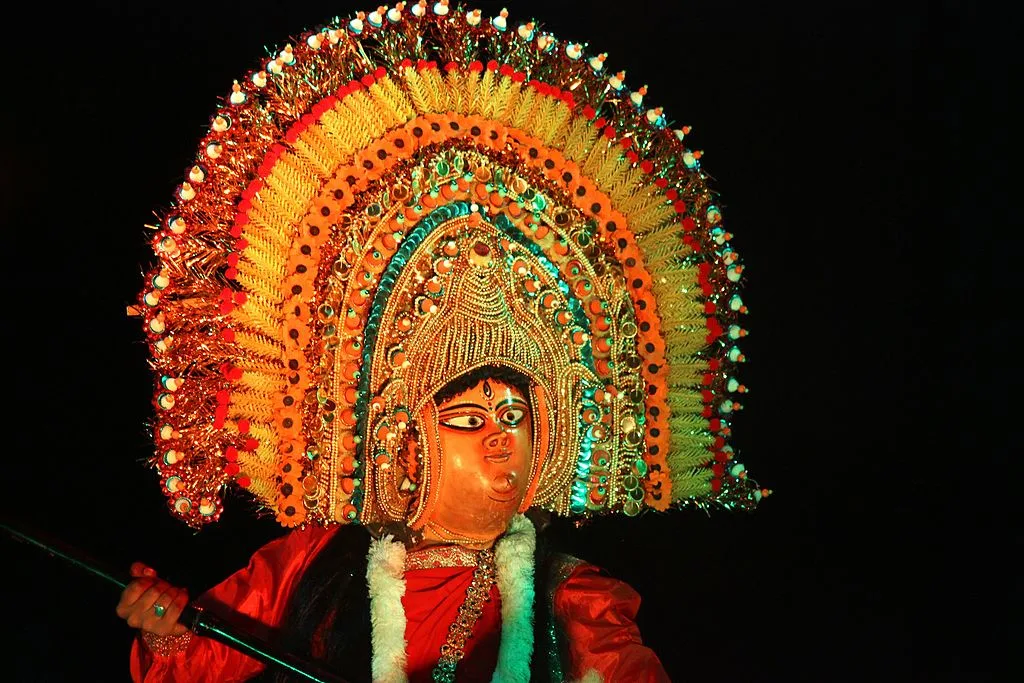
History and Region: Hailing from the eastern states of Jharkhand, West Bengal, and Odisha, Chhau is a unique dance form that combines dance, drama, and acrobatics. It originated as a form of storytelling in tribal communities.
Cultural Importance: Chhau performances often depict episodes from Indian epics like the Ramayana and Mahabharata, showcasing the region’s tribal folklore and mythological narratives.
Characteristics: Chhau is known for its vibrant masks, elaborate costumes, and dynamic movements. Performers, often adorned with striking headgear, enact powerful stories through their physical prowess and expressive gestures.
Performance and Impact: Chhau’s theatrical and energetic performances are a testament to the resilience and artistry of the tribal communities. It has gained recognition on national and international stages, preserving tribal heritage while captivating audiences.
Interesting Tidbit: Did you know that Chhau is performed in three distinct styles: Seraikella Chhau, Mayurbhanj Chhau, and Purulia Chhau, each with its unique characteristics and cultural influences?
Yakshagana: Where Dance Meets Mythology
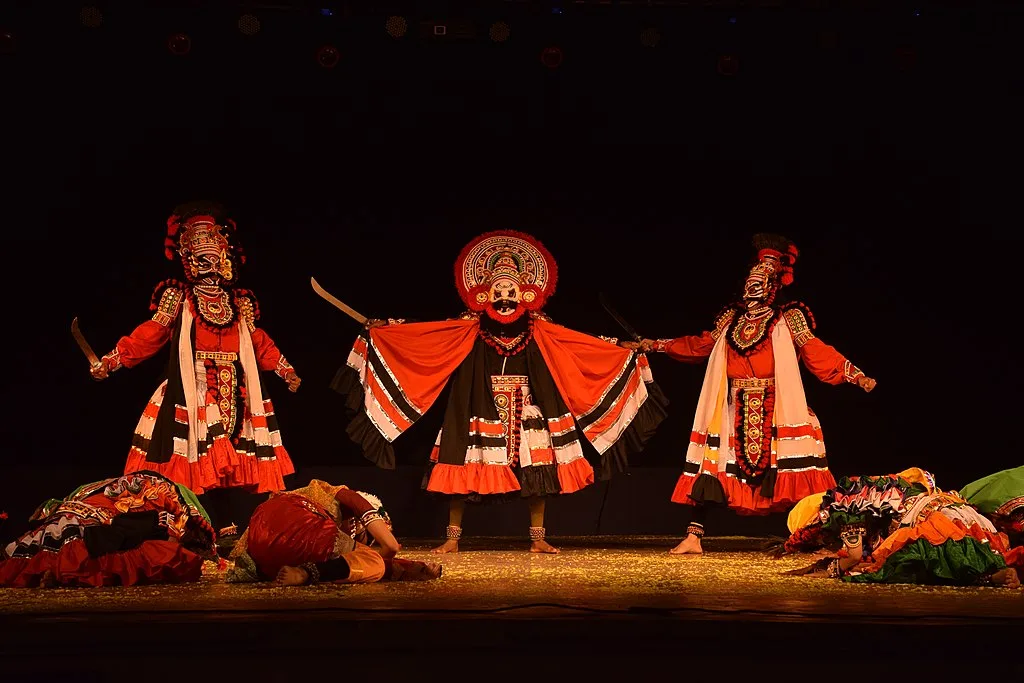
History and Region: Originating from the state of Karnataka, Yakshagana is a vibrant dance-drama form that brings to life the tales of Indian mythology, folklore, and legends. It emerged as a form of village entertainment.
Cultural Importance: Yakshagana showcases the blend of classical and folk elements, offering a window into the cultural fabric of Karnataka. Its performances often depict stories from the Mahabharata and Ramayana.
Characteristics: Elaborate makeup, colorful costumes, and exaggerated facial expressions are hallmarks of Yakshagana. The dance-drama involves intricate footwork and dynamic movements, accompanied by soul-stirring music.
Performance and Impact: Yakshagana’s immersive and dramatic performances captivate audiences, transporting them to a world of mythical beings and timeless tales. Its fusion of dance, music, and theater creates a mesmerizing experience.
Interesting Tidbit: Did you know that Yakshagana performers, known as “bhagavathas” and “mummelis,” undergo rigorous training in music, dance, and acting to master this multifaceted art form?
Bhangra: The Heartbeat of Punjab

History and Region: Originating from the vibrant state of Punjab, Bhangra is a lively folk dance that celebrates the harvest season. It emerged as a means of expressing joy and gratitude for a bountiful harvest.
Cultural Importance: Bhangra’s exuberant movements and energetic music embody the spirit of Punjab’s vibrant culture. It’s a celebration of life, community, and the joyous rhythms of rural existence.
Characteristics: Bhangra is marked by energetic footwork, rhythmic clapping, and vigorous movements. Dancers often wear vibrant traditional attire, including turbans and brightly colored clothing.
Performance and Impact: Bhangra’s infectious energy and vivacity have transcended regional boundaries, making it a global sensation. Its foot-tapping beats and lively choreography infuse any setting with exuberance.
Interesting Tidbit: Did you know that Bhangra’s popularity led to its fusion with contemporary music genres, giving rise to a dynamic and modern cultural movement?
Giddha: Celebrating Womanhood through Punjab’s Folk Dance

History and Region: Also hailing from Punjab, Giddha is a lively folk dance performed by women. It is often associated with celebrations like weddings and festivals, showcasing the resilience and vivacity of Punjabi women.
Cultural Importance: Giddha is a celebration of womanhood, camaraderie, and joy. Through rhythmic movements and spirited singing, it encapsulates the spirit and strength of Punjabi women.
Characteristics: Giddha involves graceful movements, intricate hand gestures, and spirited expressions. Dancers often form a circle, engaging in playful and vibrant interactions while maintaining the dance’s essence.
Performance and Impact: Giddha’s spirited performances create an atmosphere of merriment and unity. Its celebration of feminine energy and community bonds has made it an integral part of Punjab’s cultural identity.
Interesting Tidbit: Did you know that Giddha often incorporates witty and humorous lyrics, making it a lively form of social commentary and storytelling?
Conclusion
In the rhythmic embrace of India’s diverse dance forms, we find a reflection of the nation’s soul, a testament to its myriad cultures, traditions, and stories. From the ancient temples of Bharatanatyam to the vibrant streets of Bhangra, from the sacred expressions of Sattriya to the theatrical flair of Kathakali, dance forms of India create a unique thread in the intricate tapestry of Indian culture.
These dance forms, like the many hues of a rainbow, share a common origin: the human need to express, to communicate, and transcend. Through graceful movements, spirited rhythms, and mesmerizing storytelling, they connect us to our history, our spirituality, and our shared humanity.
In the symphony of dance forms of India, the past dances with the present, tradition dances with innovation, and cultures dance with each other. And as we marvel at the artistry of Bharatanatyam, the grandeur of Kathakali, the grace of Odissi, the exuberance of Bihu, the passion of Lavani, the unity of Garba, the enchantment of Mohiniyattam, the mythical tales of Chhau, the vibrancy of Kuchipudi, the spirituality of Sattriya, the storytelling of Yakshagana, the rhythmic beats of Bhangra, and the celebration of Giddha – we are reminded of the profound impact of dance on the human spirit.
As we conclude this journey through the kaleidoscope of dance, let us celebrate the resilience of dance forms of India, the dedication of the artists who bring them to life, and the timeless stories they tell. Let us honor the dance forms that have preserved the essence of cultures, bridging the past and the present, and forging connections that reach far beyond the stage.
In the myriad expressions of India’s dance forms, we find not only art but also the very soul of a nation – a nation that dances with life, celebrates diversity, and resonates with the universal language of movement.
